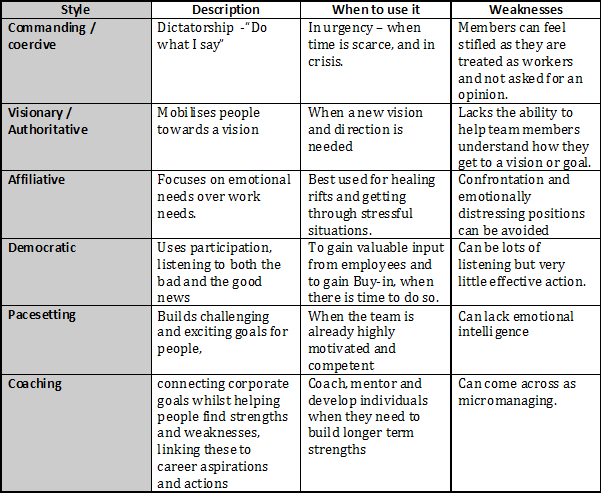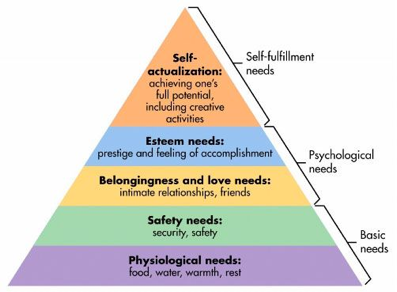Motivation in Project Management from the Project Manager’s Perspective
A project manager has to be able to plan the project, handle the stakeholders, create a risk analysis plan, handle the top management and the project team. But a topic that is often overlooked is the team motivation. The difference between a team that is highly motivated to solve a projects goal and a de-motivated team, could make the difference between a successful project, and a project that might never finish or is filled with complications. There is a growing awareness that people is one of the most important parts in a project. Since the beginning of 2000, the focus has been shifted from technical aspects (planning, budget optimizing, etc.) to more people-oriented aspects of project management - such as motivation. This applies for both practices and academic studies. [1] Motivated employees can increase productivity and efficiency. In a project a project manager that does an extra effort in motivating his employee it would increase these because a motivated team has less sick days, and absenteeism and the team members could da a extra effort to be on time. The quality of the work will also be better.[2]
There are several sources of motivating the project manager can focus on in the team. This article will show how a project manager can lead and motive, go trough some of the motivational triggers, discuss some of the limitation the project manager has to motivate, and the limitations of the sources of motivation.
Contents |
Leading and motivating

Leadership in the group does not have single formular that is the right solution. Every team is different, and their needs and desires are different. There are 6 different leadership strategies a project manager can take according to Daniel Goleman.[4] There are not one leadership strategy that is better than the other too motivate. The authoritative manager might work in some project, but in other projects the participative leader works better. The good project leader is able change and adapt to the given situation. A manager that can do that will higher the motivation.http://www.brighthubpm.com/monitoring-projects/64679-project-management-leadership-styles/
Sources of motivation
The motivation within the team member does not necessary has to come from the project manager. The motivation can be both extrinsic or intrinsic. Intrinsic motivation means that the motivation energy comes from within the person. The person has a desire, a wish to do help achieve the goal, beacuse it alligns with the persons belief and is therefore motivated. An example of this could be if the team member find the task he is assigned specially interesting, and is therefore motivated to fulfill the task efficient. Extrinsic motivation on the other hand is where the motivation energy is comming from the outside. It is in the extrinsic motivation that the project manager comes into the picture. For example can he use reward or punishment to push the team member to do a certain task. There are several ways of giving extrinsic motivation to the team member.
Marslows hierarchy of needs
Abraham Marslows had a theory that there is a hiearchy of needs, so that one has to be fulfilled before next one can be achieved.

Every member of your team has a need, something he wants. The promise of fulfillment of the needs is what drives us. Maslow's hierarchy of needs is a theory is a five-stage model that show what needs that drives us, in which order to achieve satisfaction starting from basic needs to fulfilling the human potential(self-actualization).
1. The first, the most basic need is the physiological needs. Lunch program at work could fufill this need, or having fruits available duing the day.
2. The second need is the safety needs. After being feed this issue is arising. To make sure the team members feel safe. This could be fulfill with clear communication so the employee never feel he is unsecure if he is doing his work right, he can depend on the others in team, and so on.
3. The third step is belongingness, and love needs. At this step the group activities is an example of fulfillment of this need. Teambuilding exercises or social events are some of the activities that can fulfill this need.
4.The fourth step is esteem needs. When a group member excel in the project, a job gets done, it is important to acknowledge the work he has done. This could be done by giving the employees a higher position, giving a bonus, but also a small thing as a ‘good job’ can satisfy this need.
5.With the four other needs fulfilled the team member can now reach the highest need, self-actualization and there are feelings of joy and euphoria. This step he has to reach himself and is therefore intrinsic motivation.
Feedback
Feedback is a powerfull management tool, that can either boost the motivation the right direction, but is also dangerous if used wrong. There is a general understanding that giving constructive positive feedback can be a good motivator for the employee. Giving negative feedback on the other hand can undermine the earlier exentric and intrinsic motivation and leave the person behind amotivated. When giving feedback there are various factors that need to be taken into consideration to make sure the feedback has the positive effect on the motivation.
1. The employees that is contributing most in a project often are those who need the feedback the most.
2. It is important too create a safety for the person that the feedback is pointing too.
3. Positive feedback is part of making the team member feel safe. There is a unwritten rule that says 50% constructive feedback 50% positive feedback. The positive feedback do not tell the person anything new, but stimulate the reward center in the brain and make the person open to the following critic.
4. In the feedback avoid being ambivalent, and be clear and specific in your motivation.
5. For the feedback to be relevant it is important the feedback is given frequently. It is not productive if it is given several months after the episode you want him to change on.[6]
Acknowledgement
The team has done four milestones in a project but has not had a single 'thank you', and their effort has not been acknowledged. Every member of the team will feel their work is not appreciated, and their motivation and efficiency will therefore drop drastically. This is not a situation any project manager want. Too avoid this, it is important to acknowledge peoples work with rewards for instance. It is important to carefully consider rewarding because it can have a negative effect on the intrinsic motivation. Why reward somebody for something he loves to do? If the reward is not specifically attached to a task he is assigned however(perks at the job for instance), the intrinsic motivation should not be affected. [7]
Freedom with responsibility
Autonomy is a important factor when talking motivation in projects. Most employee has a need and desire to affect a given project, and with no decisions that can affect the project they do not feel appreciated. Not feeling appreciated=> low motivation => low efficiency. This is one the the areas where intrinsic motivation can arise. This can be done by only setting a goal for the team members and letting them find the means to the end themself.
Limitations to project motivation and discussion
Both intrinsic and extrinsic motivation will help the project, and both will achieve a higher efficiency. While intrinsic motivation is the one to aim for, because in the end it will create a need or desire to complete the project, extrinsic motivation could also have a positive effect. When discussing motivation in project management, it is important also to discuss the impact of the organizational motivation. The temporary manager, a temporary team and a fixed timeline, are some of the characteristics of project management. The organization has a equally opportunity to create motivation in the team. The organization can provide some of the core elements in motivation. The organization can provide the basic needs with for instance have a lunch arrangement in the company. They can always provide the surroundings for the employee, making him feel safe and be proud of his work. Then the project manager has the opportunity to give the employee some of the higher levels of motivation in Maslows hierarchy of needs. Earlier I said that organization have a equally chance to motivate the employee. Even tho the organization can not provide the the core elements, a good project manager can still motivate his team. [7]
References
- ↑ Eight to Late (2008). Motivation in project management. [online] eight2late.wordpress.com. Available at: https://eight2late.wordpress.com/2008/08/29/motivation-in-project-management/ [Accessed 15 Sep. 2016]. The author behind this blog is co-founder and principal of Sensanalytics. He has written two books about management practices, and his work on the blog is mainly based on research papers .
- ↑ Callofthewild. (2016). Maslow’s Hierarchy of Needs – How to Motivate Your Staff. [online] callofthewild.co.uk. Available at: http://www.callofthewild.co.uk/library/theory/maslows-hierarchy-of-needs-how-to-motivate-your-staff/ [Accessed 16 Sep. 2016]. Call of the Wild is an independently-owned, limited company that teach management techniques to companies. They have won several awards for their work.
- ↑ Edcucational Business-Articles. (2006). [online]. educational-business-articles.com.Available at: http://www.educational-business-articles.com/wp-content/uploads/six-leadership-styles.gif/ [Accessed 16 Sep. 2016].
- ↑ Goleman, Daniel. (2000). Leadership That Gets Results. "This puplication is about 6 different leadership styles. Da
- ↑ Simplypsychology. (2016). [online]. simplypsychology.org.Available at: http://www.simplypsychology.org/maslow-pyramid.jpg/ [Accessed 15 Sep. 2016].
- ↑ Halford, Scott. (2016). Five Steps for Giving Productive Feedback "This is a blog in The Entrepreneur discussing 5 tips for using feedback as motivation"
- ↑ 7.0 7.1 Schmid,Bernhard and Adams,Jonathan. (2008). Motivation in Project Management: The Project Manager’s Perspective "This paper focus on self-determination theory(STD) as motivation factor. "